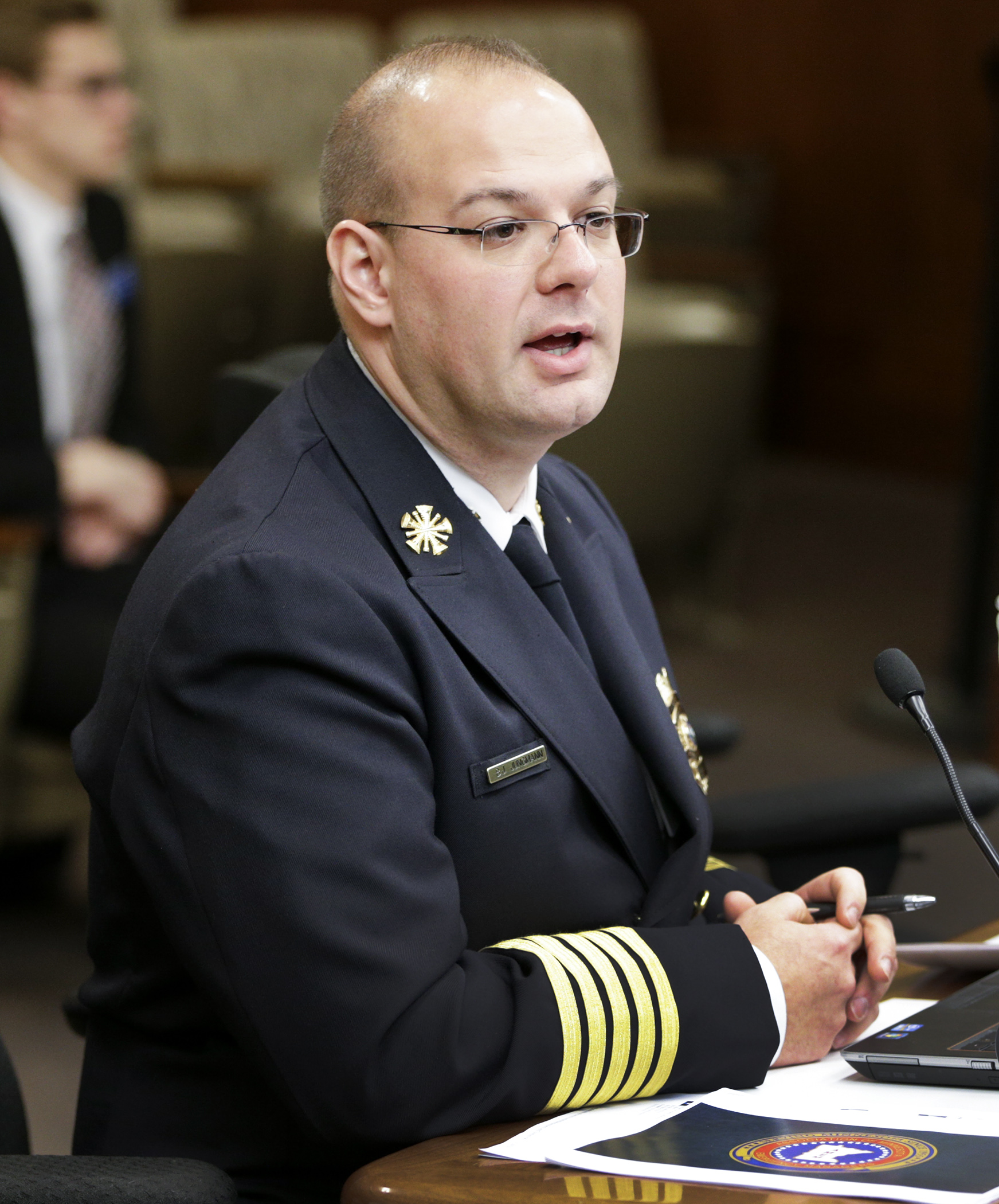More incentives sought as fewer volunteer to join firefighter ranks
It’s a service nobody ever hopes to use, but one that those in need are glad exists at a troubling time.
When 911 is called and large red fire trucks come racing to an emergency with sirens blaring, the responders are often taking time out of their daily life to provide assistance.
Of Minnesota’s estimated 21,000 firefighters, an estimated 19,232 are volunteers. Of the state’s 780 fire departments, 93 percent are volunteer. That ranks second nationally.
Providing an overview Thursday to the House Public Safety and Security Policy and Finance Committee, Burnsville Fire Chief BJ Jungmann said Minnesota ranked 46th in spending per household fire service cost in 2014. The state is the country’s 21st most populous.
“When you look at the number of firefighters per 10,000 population (in the five-state region), we have the lowest total and the lowest career and volunteer firefighters,” said Jungmann, who’s also legislative chair of the Minnesota State Fire Chiefs Association. “We make it work on a very efficient scale with very few people in comparison.”
 Representing the Minnesota Coalition on Government Information, Matt Ehling testifies before the House Civil Law and Data Practices Policy Committee Jan. 26 during a discussion on a bill sponsored by Rep. Peggy Scott, right, that would clarify convention center data classification. Photo by Andrew VonBank
Representing the Minnesota Coalition on Government Information, Matt Ehling testifies before the House Civil Law and Data Practices Policy Committee Jan. 26 during a discussion on a bill sponsored by Rep. Peggy Scott, right, that would clarify convention center data classification. Photo by Andrew VonBankThe committee took no action.
Rep. Brian Johnson (R-Cambridge) is a former volunteer firefighter.
“I know how much time is taken away from their families, how much training,” he said. “We need to do some work to try to do things for them because they’re very important for the safety of our public.”
Volunteer by name, those responders can receive a small per-call stipend usually in the $10-$12 range, no matter if the call takes one hour or eight hours.
One firefighter benefit is a lump-sum retirement check; however, Rep. Jim Newberger (R-Becker) noted the state “takes a big bite” by taxing the money.
Jungmann said a tax-exempt retirement package would be “advantageous” as a recruitment and retention package.
Throughout the state, communities are struggling to recruit and retain individuals while the number of calls is predicted to keep increasing, especially for emergency medical services.
“Regardless of whether your fire department provides the ambulance service, they are usually engaged at some level of first response in the EMS system because generally they are trained to provide medical aid to the people in your community,” Jungmann said.
He said many department officials have said they’re lucky to keep a trained firefighter for five years.
“If you spend 18 months in training, you’re getting three years out of these folks before they turn over,” Jungmann said. “That is very difficult.”
Firefighter qualifications are minimal with a candidate needing to be at least 18 and be able to pass a criminal background check. “We’re looking for good people that have a good work ethic and a good reputation that are willing to work hard,” Jungmann said.
Equipment and training costs also continue to rise. It costs about $27,000 to train and equip someone to be a firefighter.
Fire department functions — which includes emergency medical services, fire prevention and public education activities — are funded, in part, through a fire safety account in the state fire marshal’s office.
Jungmann said some local government units have put into their fee schedule the ability to recoup service call costs from the responsible party, although, Johnson said, state statute has created some difficulty for medical call reimbursement.
When serving on his city council, Rep. Jack Considine (DFL-Mankato) said a “significant number” of calls were to nursing homes and assisted-living facilities where someone fell. “We need to also look at private entities when they’re failing to staff their institutions with the ability to take care of their folks.”
Other legislation supporters are pushing is the creation of more fire taxing districts, instead of just joint powers agreements, to help fund fire service operations. Special legislation has provided for one in Cloquet.
Related Articles
Search Session Daily
Advanced Search OptionsPriority Dailies
Ways and Means Committee OKs proposed $512 million supplemental budget on party-line vote
By Mike Cook Meeting more needs or fiscal irresponsibility is one way to sum up the differences among the two parties on a supplemental spending package a year after a $72 billion state budg...
Meeting more needs or fiscal irresponsibility is one way to sum up the differences among the two parties on a supplemental spending package a year after a $72 billion state budg...
Minnesota’s projected budget surplus balloons to $3.7 billion, but fiscal pressure still looms
By Rob Hubbard Just as Minnesota has experienced a warmer winter than usual, so has the state’s budget outlook warmed over the past few months.
On Thursday, Minnesota Management and Budget...
Just as Minnesota has experienced a warmer winter than usual, so has the state’s budget outlook warmed over the past few months.
On Thursday, Minnesota Management and Budget...